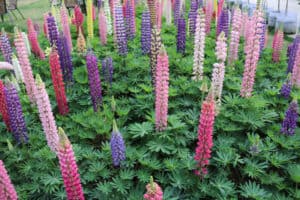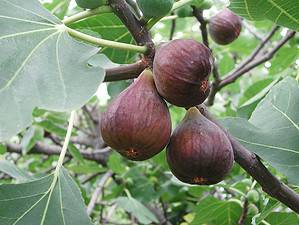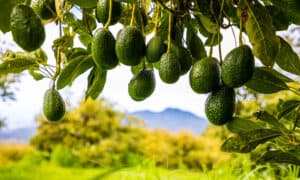New York State is home to many plants, some of which can be highly dangerous if consumed or touched. Therefore, knowing which plants to avoid and where they grow is important.
In this article, we will explore the 5 most dangerous plants in New York, providing insight into their appearance, habitat, and the potential harm they can cause. Whether you are an outdoor enthusiast, a gardener, or simply looking to expand your knowledge, this article will be beneficial!
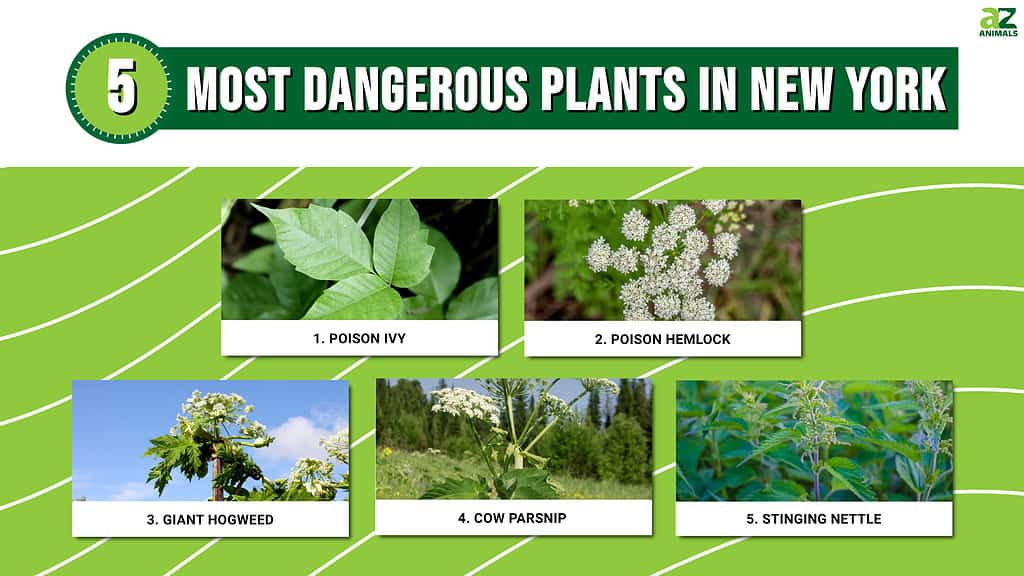
1. Poison Ivy (Toxicodendron radicans)
Poison ivy is common in many areas of New York State, such as in wooded areas, fields, and along the edges of roads and trails. In addition, poison ivy can adapt to various growing conditions, making it a hardy and robust plant.
One of the most distinguishing features of poison ivy is its three-leaf clusters. These leaves are a light green color and have serrated edges. As the plant grows, the leaves may appear more glossy. In addition, the leaves can turn a striking red or orange in the fall. It is essential to know how to differentiate poison ivy from other similar-looking plants, such as Virginia Creeper, which has five leaflets instead of three.
Another identifying characteristic of poison Ivy is the white berries produced by mature plants. They grow in clusters and are about 1/4 inch in diameter. The berries can be easily mistaken for harmless fruit, so it’s important only to eat any berries found in the wild if you are 100% sure of their identity.
Poison ivy thrives in warm and humid conditions, and its vines can climb and intertwine with other vegetation, making it difficult to avoid. In addition, the plant contains oily resin called urushiol, which can cause an itchy red rash, blisters, and swelling in humans who come into contact with it. More severe reactions can cause swelling and inflammation, which may require medical attention.
It is also toxic to animals and can cause various symptoms, such as diarrhea, vomiting, and difficulty breathing.
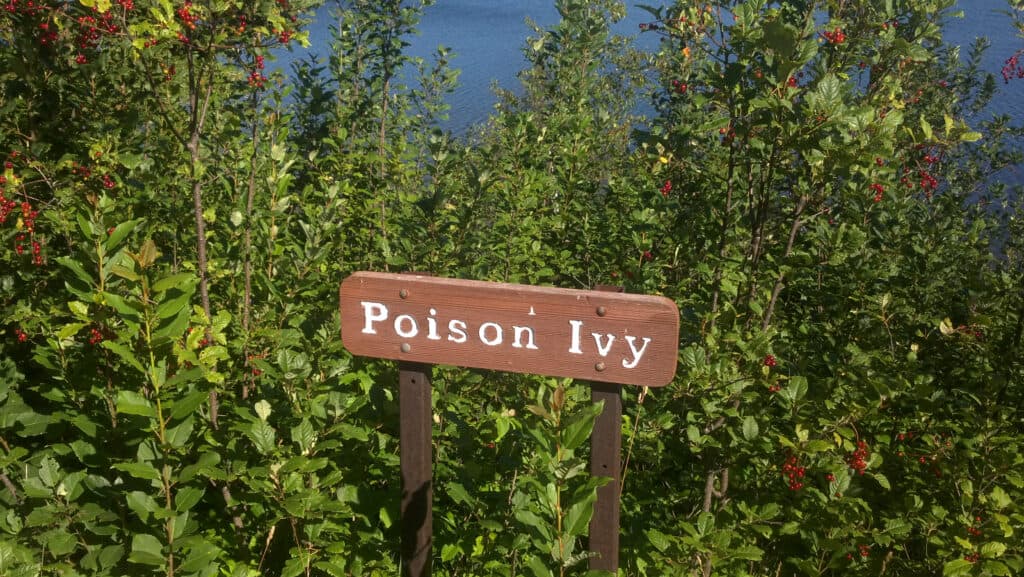
Can dogs get poison ivy? Yes, but it’s rare. Usually, they will not react to the plant but can spread their oils to humans.
©Tim R7/Shutterstock.com
2. Poison Hemlock (Conium maculatum)
Poison hemlock is a highly toxic plant that you can find in New York. The plant is a tall, erect herb found in wet meadows, along roadsides, and in other open areas from June through September. Poison Hemlock has smooth stems that sometimes consist of purple spots. Its leaves are finely divided, with several leaflets that give it a delicate, fern-like appearance. The entire plant is highly toxic, with the roots and seeds being particularly dangerous. Symptoms of poisoning include respiratory failure, convulsions, and even death.
Its white flowers grow in clusters that can reach up to 8 inches in diameter and has a strong odor when the leaves are crushed. Many people mistake poison hemlock for harmless wildflowers or edible herbs, making it a threat to those who unknowingly come into contact with it.
Ingesting any part of the Poison Hemlock plant, whether accidentally or purposefully, can result in severe poisoning, causing symptoms such as respiratory failure, seizures, and death. Therefore, it is crucial to identify and avoid coming into contact with this dangerous plant.
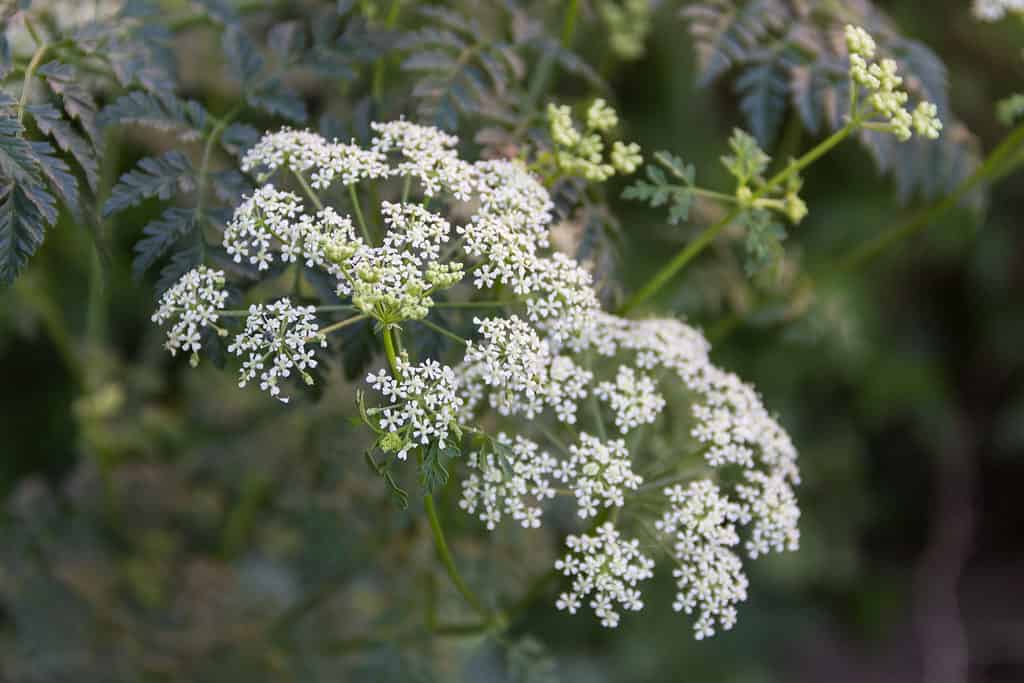
Every part of the poison hemlock plant is poisonous and can cause respiratory failure and death.
©iStock.com/gabrielabertolini
3. Giant Hogweed (Heracleum mantegazzianum)
The giant hogweed plant is toxic and has a large white flower cluster in late summer. It can grow up to 8-14 feet tall and have a group of flowers up to 2.5 feet across, with a 2-4 inches diameter. The leaves of the giant hogweed plant can grow up to 5 feet wide and have deep indentations, coarse hairs, and purple patches.
Giant hogweed can cause itchy skin, red spots, and painful blisters that can scar. This is due to the plant’s phototoxic sap, which also causes sensitivity to sunlight.
This plant grows in various locations in western New York, including fields, woodlands, along roads, ditches, and near bodies of water with fertile, damp soil.
Giant hogweed was federally designated a noxious weed. According to New York State law, possessing, selling, importing, buying, transporting, introducing, or propagating is illegal.
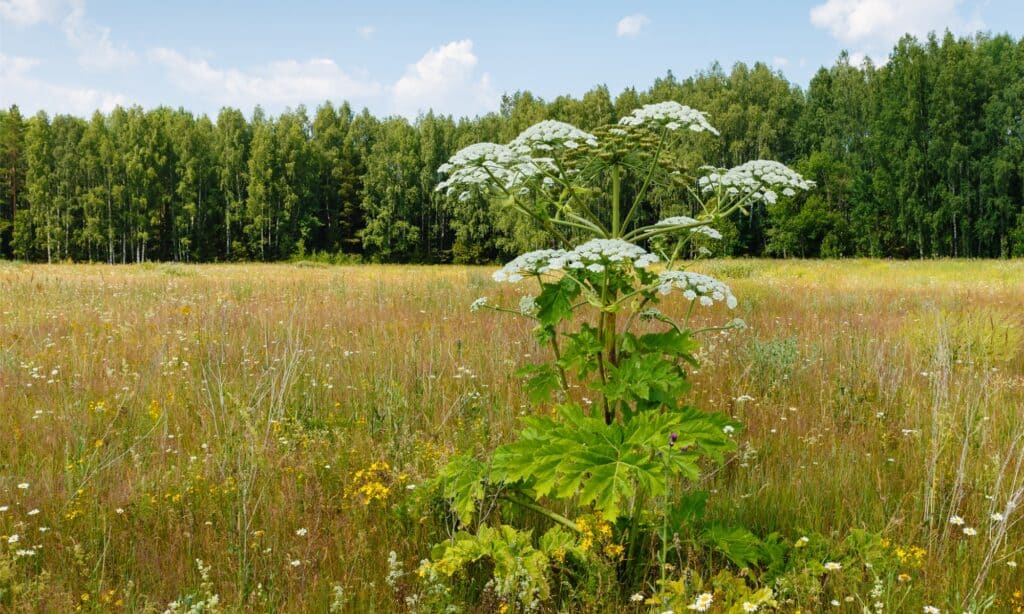
Giant hogweed grows in fields and close to bodies of water in damp soil.
©iStock.com/Mieszko9
4. Cow Parsnip (Heracleum maximum)
Cow parsnip is an indigenous plant from the carrot family. It is present in various habitats across upstate NY, including woodlands, forest openings, grasslands, stream and river edges, and along roadsides. However, it is generally not common in the region, but you may spot them in cooler parts of the state.
You can identify cow parsnip plants by their stems with flat white flower clusters. Furanocoumarins, which are phototoxic substances triggered by ultraviolet light from sunshine, are found in the sap of cow parsnips. A blistering, itchy rash may develop if the sap comes into contact with the skin and sunlight and may take time to heal.
Cow parsnips typically bloom from late May to late June in New York.
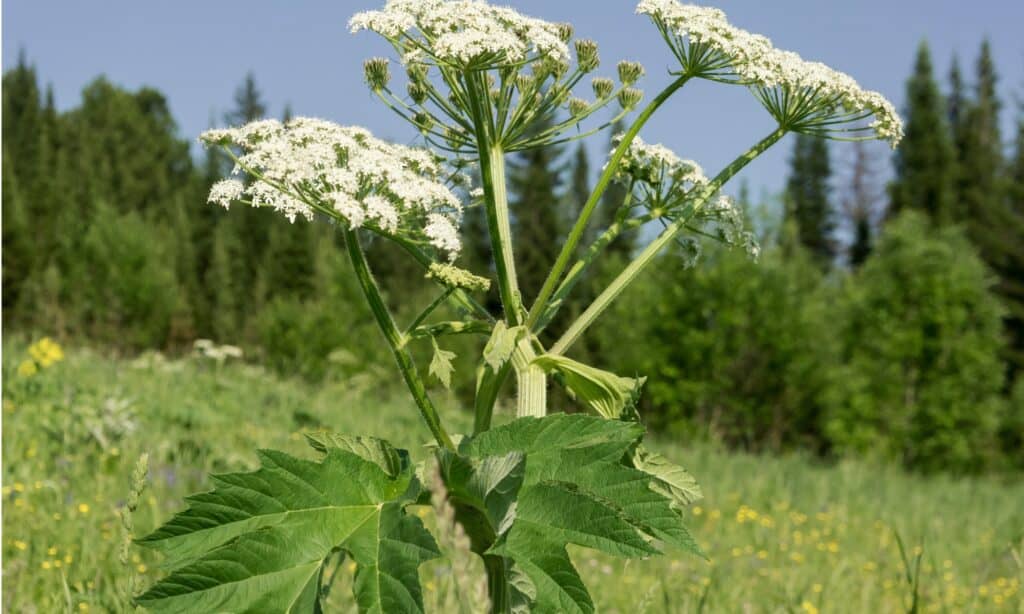
You can find cow parsnip along streams, rivers, and at the edge of woods.
©iStock.com/Svetlana Popova
5. Stinging Nettle (Urtica dioica)
The Stinging nettle is a herbaceous plant with dense layers of stinging and non-stinging plant hairs covering both its stems and leaves.
When touched, the bulbous caps that cover the heads of their stinging plant hair come off, exposing needle-like tubes that can pierce the flesh. The sting can feel similar to a bee sting. Acetylcholine, formic acid, histamine, and serotonin — all of which can result in an itchy, burning rash on people and animals for up to 12 hours — are present in these tubes.
Although stinging nettle plants are all across the country, they are more common on the edges of forest areas and other unspoiled New York locations.
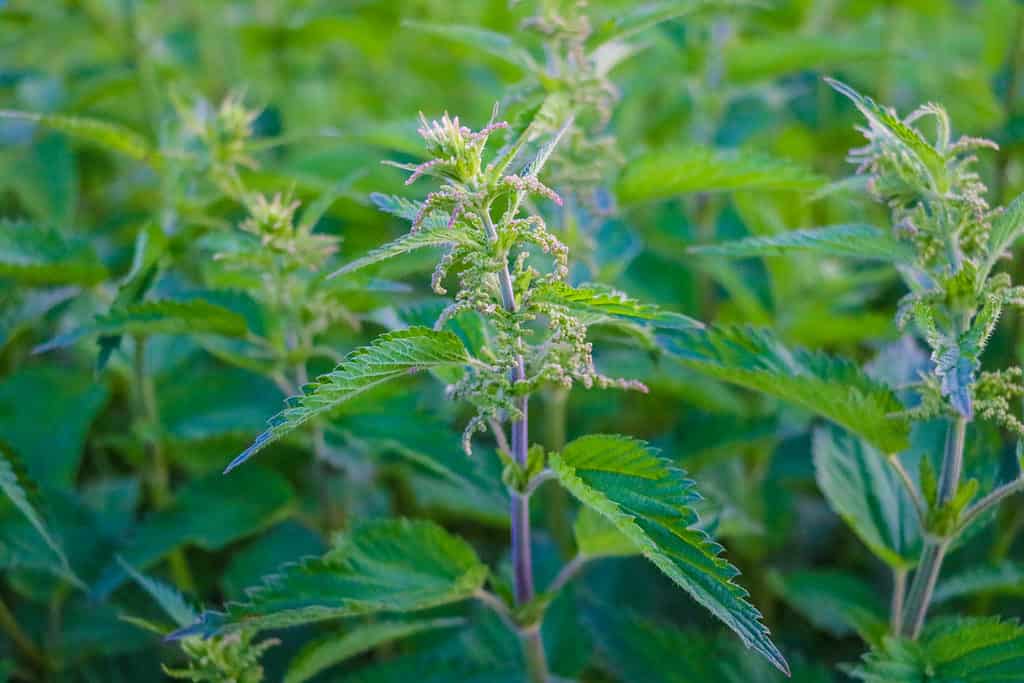
The stinging nettle’s needle-like tubes can feel like a bee sting when they pierce the flesh.
©iStock.com/Dmitri Zelenevski
Final Thoughts
It is vital to seek immediate medical assistance for severe or persistent symptoms. In addition, recognizing and avoiding contact with certain plants can help avert harmful situations.
Should you come in contact with any dangerous plants in New York, call NYC Poison Control Center at 1-800-222-1222 or 212-POISONS for more information. Additionally, you can call 311 for additional information on any poisonous plant. Specialists are available 24/7 and can assist in more than 150 languages.
Summary of 5 Most Dangerous Plants in New York
| # | Plant | Reaction |
|---|---|---|
| 1 | Poison Ivy | Itchy red rash, blisters, swelling |
| 2 | Poison Hemlock | Can cause respiratory failure and death if ingested |
| 3 | Giant Hogweed | Itchy skin, red spots, painful blisters that cause scaring |
| 4 | Cow Parsnip | Blistering, itch rash |
| 5 | Stinging Nettle | Itchy, burning rash |
The photo featured at the top of this post is © iStock.com/email2ying
Thank you for reading! Have some feedback for us? Contact the AZ Animals editorial team.



